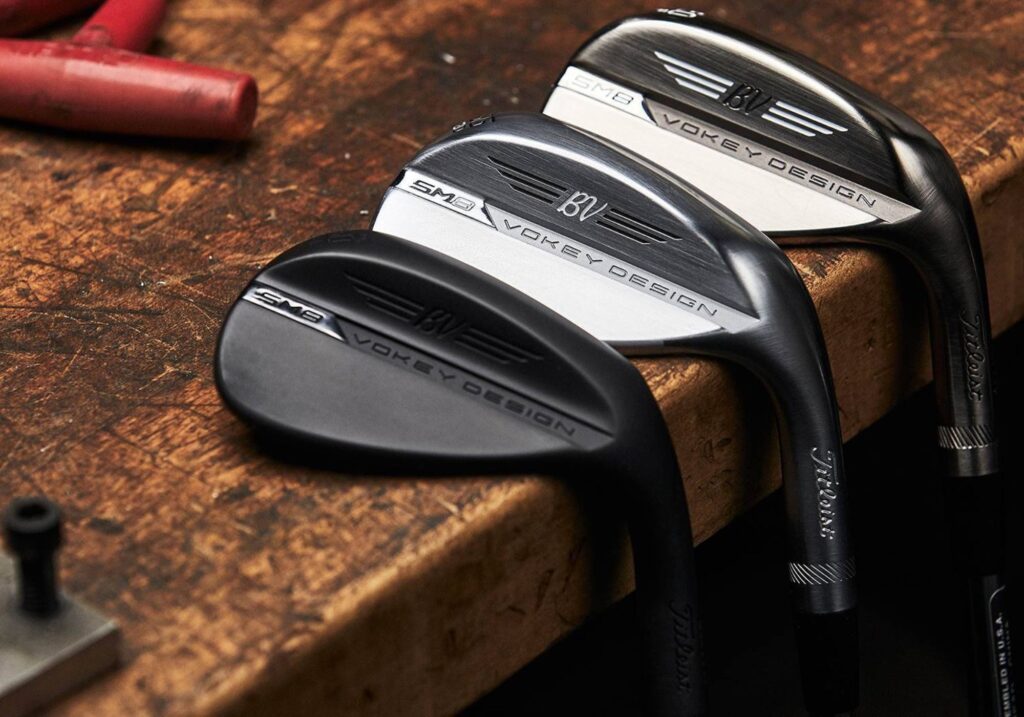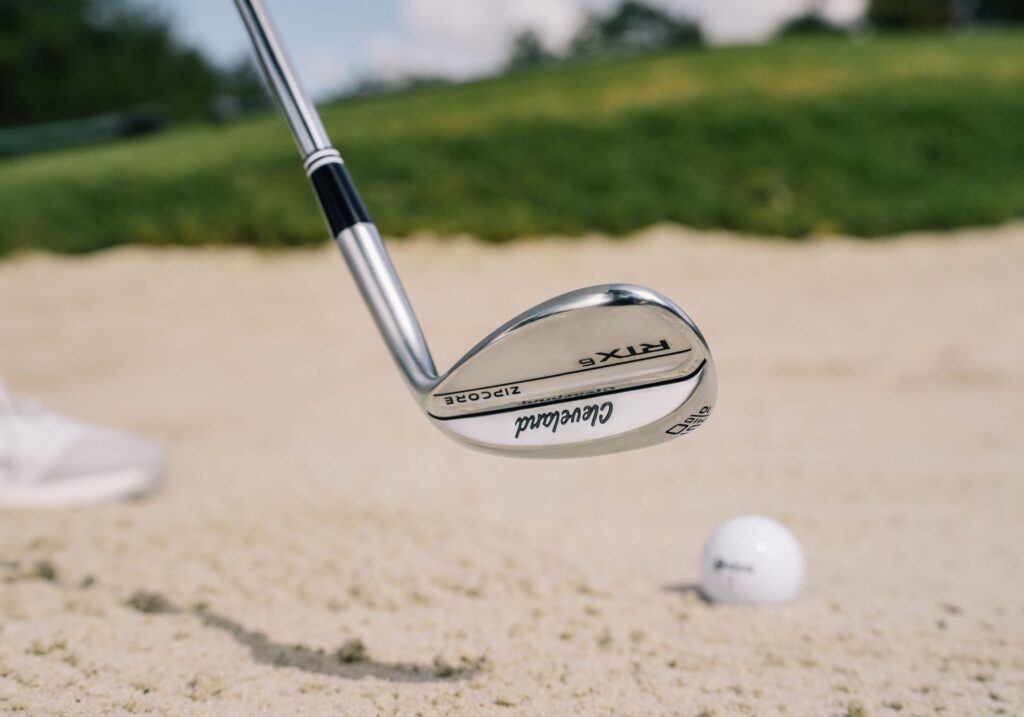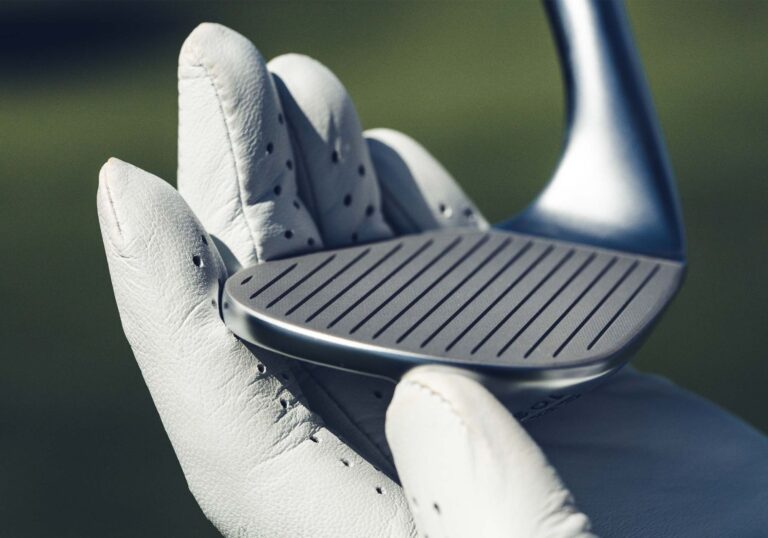Ever Wondered If You’re Using the Right Wedges?
You’re 50 yards out, staring down a tucked pin. You pull your sand wedge, make a decent swing and the ball sails 20 feet long. Again.
Here’s the truth: most golfers don’t really understand their wedges. They just use what came with their iron set, or maybe picked one up because it “looked like what pros use.” But your wedge setup is one of the most important parts of your bag and having the right ones can save you strokes every single round. Making golf more fun and instantly improving your short game.
This guide breaks down the four key wedges (pitching, gap, sand, lob), what they’re designed to do, what lofts to look for and how many wedges you should really be carrying.

The Four Main Types of Wedges
Let’s start by understanding what each wedge is actually for.
1. Pitching Wedge (PW)
Loft: Typically 44°–48°
Used for: Full shots from 110–135 yards (golfer dependent), bump-and-runs, lower-trajectory chips
Your pitching wedge is usually the lowest-lofted wedge and part of your standard iron set. It’s basically your bridge between the 9-iron and your specialty scoring wedges. Most golfers use it for full swings into greens or controlled, lower-flying chip shots.
2. Gap Wedge (GW or AW)
Loft: Typically 50°–54°
Used for: Filling the “gap” between PW and SW, controlled full swings, mid-length chips
This wedge is all about dialing in your distance control. If there’s too big of a yardage gap between your PW and SW, you’ll constantly find yourself stuck between clubs. A gap wedge (sometimes called an approach wedge) helps smooth that transition.
If your PW is 45°, a 50°–52° gap wedge is usually the right fit.
3. Sand Wedge (SW)
Loft: Typically 54°–56°
Used for: Greenside bunker shots, pitch shots, high-launching chips
The sand wedge is one of the most versatile clubs in the bag. It’s the go-to for bunker play, but also excels in soft lies, thick rough, and delicate pitches around the green. The sand wedge often features a wider sole (or more “bounce”) helps prevent digging into the turf or sand, making it more forgiving on imperfect strikes.
Even if you never touch a bunker, every golfer needs a solid SW.
4. Lob Wedge (LW)
Loft: Typically 58°–62°
Used for: High, soft shots over hazards, short-sided chips, flop shots
This is your specialty wedge. It’s designed to launch the ball high and stop it quickly. Great for tight lies, firm greens, or when you need to get the ball up fast and land it soft. That said, lob wedges can be tricky to hit, especially for beginners, due to the higher loft and shorter swing arc.
What Do Loft and Bounce Really Mean?
We’ve mentioned loft a lot already, but let’s quickly define it.
- Loft: The angle of the clubface that affects trajectory and distance. Higher loft = higher shots = less distance.
- Bounce: The angle between the sole and the ground when the club is grounded. More bounce = more forgiveness in soft lies or sand. Less bounce = better for tight, firm turf.
If you tend to hit behind the ball or struggle in bunkers, more bounce is your friend. If you play on firm, dry courses or love to nip the ball clean, a lower-bounce wedge might suit you better.

How Many Wedges Should You Carry?
Here’s the short answer: at least three, and possibly four.
Most golfers carry:
- Pitching Wedge
- Gap Wedge
- Sand Wedge
- Lob Wedge
That gives you complete coverage from about 60 yards to 130 yards (depending on your swing speed), plus all the short-game tools you need.
The 3-Wedge Setup
Best for: Casual golfers, minimalists, high-handicappers
- PW (from iron set)
- SW (54°–56°)
- LW (58°–60° or skip this for easier gapping)
This works if you prefer simplicity or don’t take a lot of full wedge swings.
The 4-Wedge Setup
Best for: Intermediate to advanced golfers, or anyone who wants better gapping
- PW (45°–46°)
- GW (50°–52°)
- SW (54°–56°)
- LW (58°–60°)
This setup helps eliminate distance gaps and gives you more short-game versatility.
Bonus tip: Always check the loft of your PW before buying other wedges. Iron sets have gotten stronger over time and many modern pitching wedges are 44° or 45°, which creates a huge gap if your next wedge is a 56° SW.

What Newer Golfers Should Know
- Don’t just buy wedges based on what your buddy plays or what looks cool. Make sure the lofts and bounces fit your swing and course conditions.
- Consider getting fit for your wedges. Even a basic gap fitting (just checking your yardages and lofts) can help you make smarter choices.
- If you’re struggling around the greens, try a sand wedge with 12–14 degrees of bounce. It’s the most forgiving option out there.
- You don’t need to master the flop shot. A 56° wedge with a simple, repeatable swing will serve you better than trying to hit highlight-reel shots with a lob wedge.
Final Thoughts: Build Your Scoring Toolbox
Wedges aren’t flashy. They don’t promise extra yards or wild ball speeds. But they are where scoring happens.
If you’ve ever chunked a pitch, bladed a chip, or found yourself 20 yards short because you didn’t have the right club, then it’s time to pay attention to your wedge setup. Think of these clubs as your toolbox and each one designed for a specific job.
Build it right, and you’ll start saving strokes where it matters most: inside 100 yards.
How Many Wedges Are in Your Bag?
Still playing the same wedges from five years ago? Just added a lob wedge and seeing results? Let us know what’s working for you. Your wedge setup could be the missing piece for another golfer.
